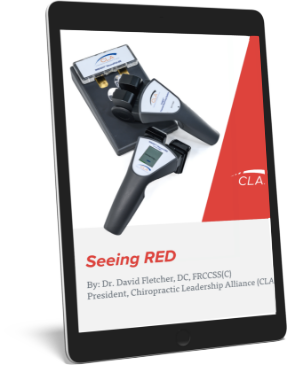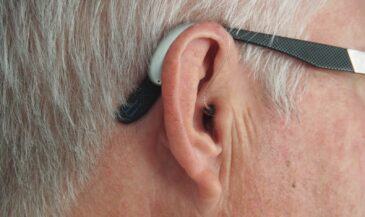By Dr. Christopher Kent
Compression of spinal nerves has traditionally been proposed as a mechanism associated with spinal subluxation.[1] Although contemporary research has demonstrated that other mechanisms may induce neuronal disturbances, nerve compression has also been explored in relation to nerve dysfunction. The modern chiropractor should be familiar with this literature, and understand its clinical implications.
Attempts have been made to discredit the premise that subluxations cause nerve interference by mechanical compression.[2] Animal studies of nerve compression reported that pressures ranging from 130 mm Hg to over 1000 mm Hg were required to produce a significant compression block.[3,4,5] However, these older studies dealt with peripheral nerves, not spinal roots.
Sunderland and Bradley reported that spinal roots may be more susceptible to mechanical effects because of their lack of the perineurium and funicular plexus formations present in peripheral nerves.[6] However, few experimental studies involving compression of nerve roots were reported in the literature.[7] Those which were reported were criticized.[8]
In 1975, Seth Sharpless, a neuropsychologist at the University of Colorado, reported the results of a series of animal experiments to determine the susceptibility of spinal roots to compression block. These investigations were supported by the ICA and the ACA. The results were published in a monograph by the National Institutes of Health. Sharpless described his results as “astonishing” and “spectacular.”
According to the report, “A pressure of only 10 mm Hg produced a significant conduction block, the potential falling to 60% of its initial value in 15 minutes, and to half of its initial value in 30 minutes. After such a small compressive force is removed, nearly complete recovery occurs in 15 to 30 minutes. With higher levels of pressure, we have observed incomplete recovery after many hours of recording.”[8]
Physiologist I.M. Korr listed factors which render nerve roots more vulnerable to mechanical effects than peripheral nerves [9]:
1. Their location within the intervertebral foramen is in itself a great hazard.
2. Spinal roots lack the protection of epineurium and perineurium.
3. Since each root is dependent on a single radicular artery entering via the foramen, the margin of safety provided by collateral pathways is minimal.
4. Venous congestion may be more common in the roots because the radicular veins would probably be immediately compressed by any reduction in foraminal diameter. There is also the possibility of reflux from the segmental veins through pressure damaged valves; and venous congestion would have additional consequences because the swelling, being within the foramen, would contribute to compression of the other intraforaminal structures.
5. Circulation to the dorsal root ganglion is especially vulnerable.
Contemporary papers have been published concerning nerve root compression. Rydevik reported “Venous blood flow to spinal roots was blocked with 5-10 mm Hg of pressure. The resultant retrograde venous stasis due to venous congestion is suggested as a significant cause of nerve root compression. Impairment of nutrient flow to spinal nerves is present with similar low pressure.”[10]
Hause reported that compressed nerve roots can exist without causing pain. Also described in the paper is a proposed mechanism of progression, where mechanical changes lead to circulatory changes, where inflammatogenic agents may result in chemical radiculitis. This may be followed by disturbed CSF flow, defective fibrinolysis and resulting cellular changes. The influence of the sympathetic system may result in synaptic sensitization of the CNS and peripheral nerves, creating a “vicious circle” resulting in radicular pain.[11]
Kuslich, Ulstrom, and Michael reported on the importance of mechanical compromise of nerve roots in the production of radicular symptoms. Their human surgical studies revealed that “Stimulation of compressed or stretched nerve root consistently produced the same sciatic distribution of pain as the patient experienced preoperatively…we were never able to reproduce a patient’s sciatica except by finding and stimulating a stretched, compressed, or swollen nerve root.”[12]
The importance of asymptomatic lesions was reported by Wilberger and Pang who followed 108 asymptomatic patients with evidence of herniated discs. They reported that within three years, 64% of these patients developed symptoms of lumbosacral radiculopathy.[13]
Schlegal et al, Kirkaldy-Willis and Manelfe report that subluxation of the facet joints may be associated with nerve root entrapment and spinal stenosis, particularly when degenerative disease is present. The degenerative changes are described as a progressive “cascade.”[14,15,16]
Nerve root compression is one of many mechanisms of neural disruption which may be associated with vertebral subluxation. While some may criticize the “garden hose” model as being overly simplistic, the nerve root compression hypothesis is far from obsolete.
References
1. Palmer BJ: “Chiropractic Proofs.” Davenport, IA, 1903. Reproduced in Peterson D, Wiese G (eds): “Chiropractic: An Illustrated History.” Mosby, St. Louis, MO, 1995. Page 78.
2. Crelin ES: A scientific test of the chiropractic theory. Am Sci 61(5):574, 1973.
3. Meek WJ, Leaper WE: “The effect of pressure on conductivity of nerve and muscle.” Amer J Physiol 27:308, 1911.
4. Bentley FH, Schlapp W: “The effects of pressure on conduction in peripheral nerves.” J Physiol 102:72, 1943.
5. Causey G, Palmer E: “The effect of pressure on nerve conduction and nerve fiber size.” J Physiol 109:220, 1949.
6. Sunderland S, Bradley L: “Stress-strain phenomena in human spinal roots.” Brain 84:121, 1961.
7. Gelfan S, Tarlov IM: “Physiology of spinal cord, nerve root and peripheral nerve compression.” Amer J Physiol 185:217, 1956.
8. Sharpless SK: “Susceptibility of spinal roots to compression block.” The Research Status of Spinal Manipulative Therapy. NINCDS monograph 15, DHEW publication (NIH) 76-998:155, 1975.
9. Korr IM: Discussion. The Research Status of Spinal Manipulative Therapy. NINCDS monograph 15, DHEW publication (NIH) 76-998:203, 1975.
10. Rydevik BL: “The effects of compression on the physiology of nerve roots.” JMPT 15(1):62, 1992.
11. Hause M: “Pain and the nerve root.” Spine 18(14):2053, 1993.
12. Kuslich S, Ulstrom C, Michael C: “The tissue origin of low back pain and sciatica: a report of pain response to tissue stimulation during operations on the lumbar spine.” Ortho Clinics of North America 22(2):181, 1991.
13. Wilberger JE Jr, Pang D: “Syndrome of the incidental herniated lumbar disc.” J Neurosurg 59(1):137, 1983.
14. Schlegel JD, Champine J, Tayler MS et al: “The role of distraction in improving the space available in the lumbar stenotic canal and foramen.” Spine 19(18):2041, 1994.
15. Kirkaldy-Willis WH: “The relationship of structural pathology to the nerve root.” Spine 9(1):49, 1984.
16. Manelfe C: “Imaging of the Spine and Spinal Cord.” Raven Press, New York, NY, 1992.






























































































































































